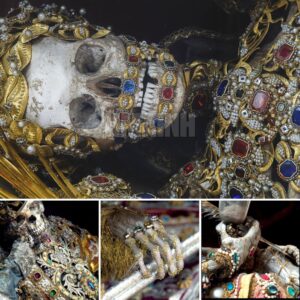In the heart of Cologne, Germany, amidst the grandeur of the City Hall, lies a peculiar and enigmatic sight—a grotesque male character seemingly engaged in an automatic fall under the statue of Archbishop Konrad von Hochstaden. Dating back to around 1406, this curious sculpture has captured the imagination of visitors and historians alike, inviting speculation about its origins and significance. Join us as we delve into the mysteries of this intriguing artwork, exploring its symbolism, historical context, and the fascinating world of medieval sculpture.
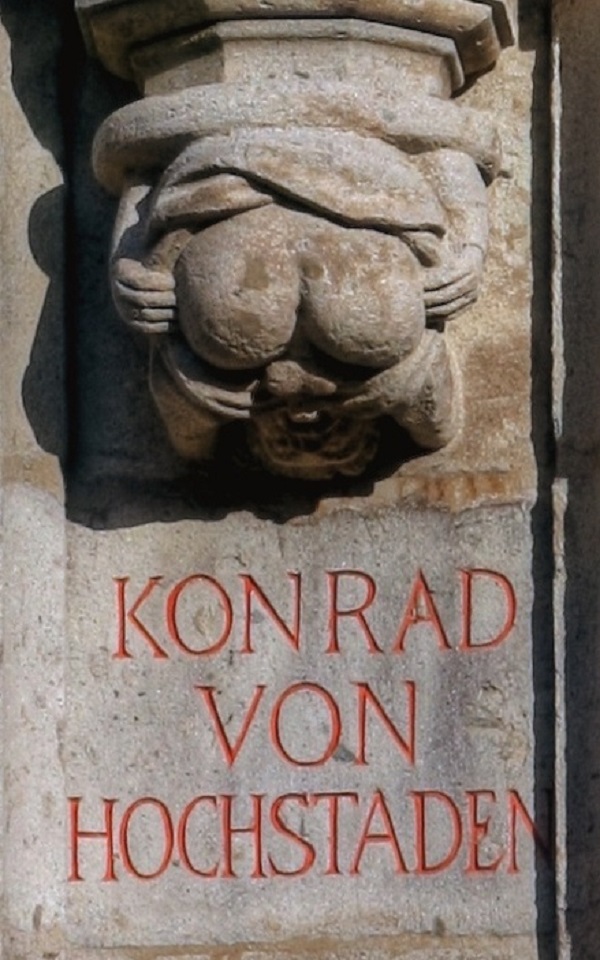
The Grotesque Male Character: A Curious Spectacle
At first glance, the grotesque male character beneath the statue of Archbishop Konrad von Hochstaden appears to defy explanation. With its contorted posture and exaggerated features, it exudes a sense of whimsy and absurdity that is both captivating and perplexing. Some interpretations suggest that the figure represents a jester or fool, engaged in a comedic performance for the amusement of passersby. Others speculate that it may have served a more symbolic purpose, conveying a deeper message about the transience of earthly power and the folly of human ambition.
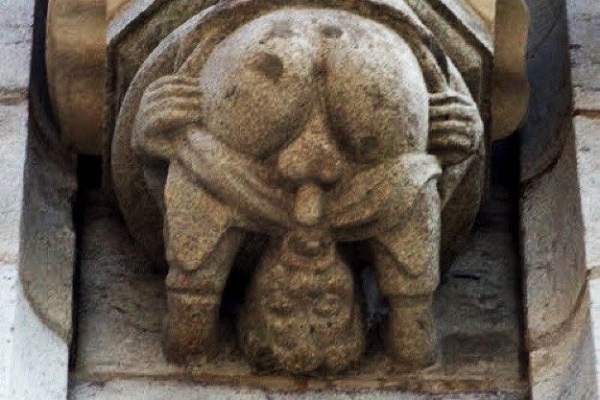
Automatic Flirting Movements: Unraveling the Mystery
What sets this particular sculpture apart is the depiction of the grotesque male character engaged in automatic flirting movements—an unusual and unexpected detail for a work of art from the medieval period. The inclusion of such a gesture raises questions about the intentions of the artist and the cultural context in which the sculpture was created. Was it intended as a playful commentary on courtly love and romantic intrigue? Or does it hold deeper significance, perhaps reflecting societal attitudes towards gender and sexuality in 15th-century Cologne?
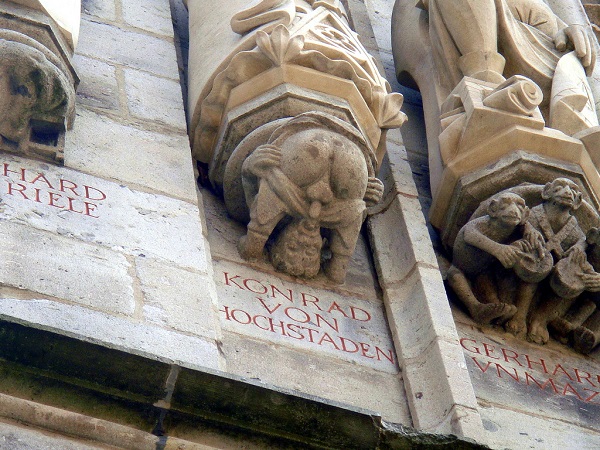
Historical Context: Insights into Medieval Life
To truly understand the significance of the grotesque male character at Cologne City Hall, we must delve into the rich tapestry of medieval history and culture. During the late Middle Ages, Cologne was a thriving center of trade and commerce, renowned for its bustling markets and vibrant artistic community. The City Hall itself was a symbol of civic pride and authority, serving as a hub for political and social gatherings. Against this backdrop, the sculpture likely played a role in shaping public perceptions and reinforcing communal values.
Interpretations and Speculations
Over the centuries, scholars and art enthusiasts have offered various interpretations and speculations about the meaning of the grotesque male character at Cologne City Hall. Some view it as a satirical commentary on the corruption and decadence of the clergy, with the figure’s antics serving as a metaphor for the hypocrisy of religious leaders. Others see it as a lighthearted nod to the absurdities of human nature, reminding viewers not to take themselves too seriously in the face of life’s uncertainties.
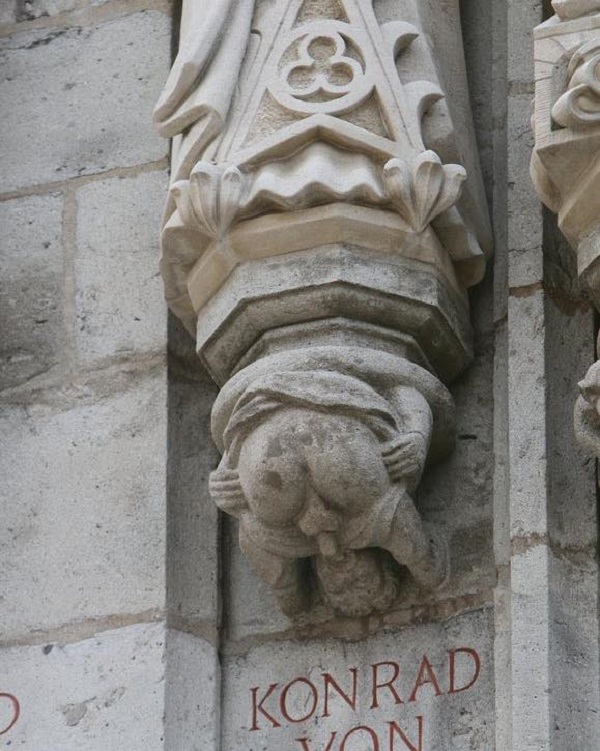
In conclusion, the grotesque male character performing an automatic fall under the statue of Archbishop Konrad von Hochstaden at Cologne City Hall remains a captivating enigma that continues to intrigue and inspire. Through its whimsical charm and thought-provoking symbolism, this sculpture offers a window into the complexities of medieval life and the enduring allure of artistic expression. As we ponder its meaning and significance, let us embrace the spirit of curiosity and exploration that drives archaeological inquiry, enriching our understanding of the past and illuminating the path towards a more enlightened future.





